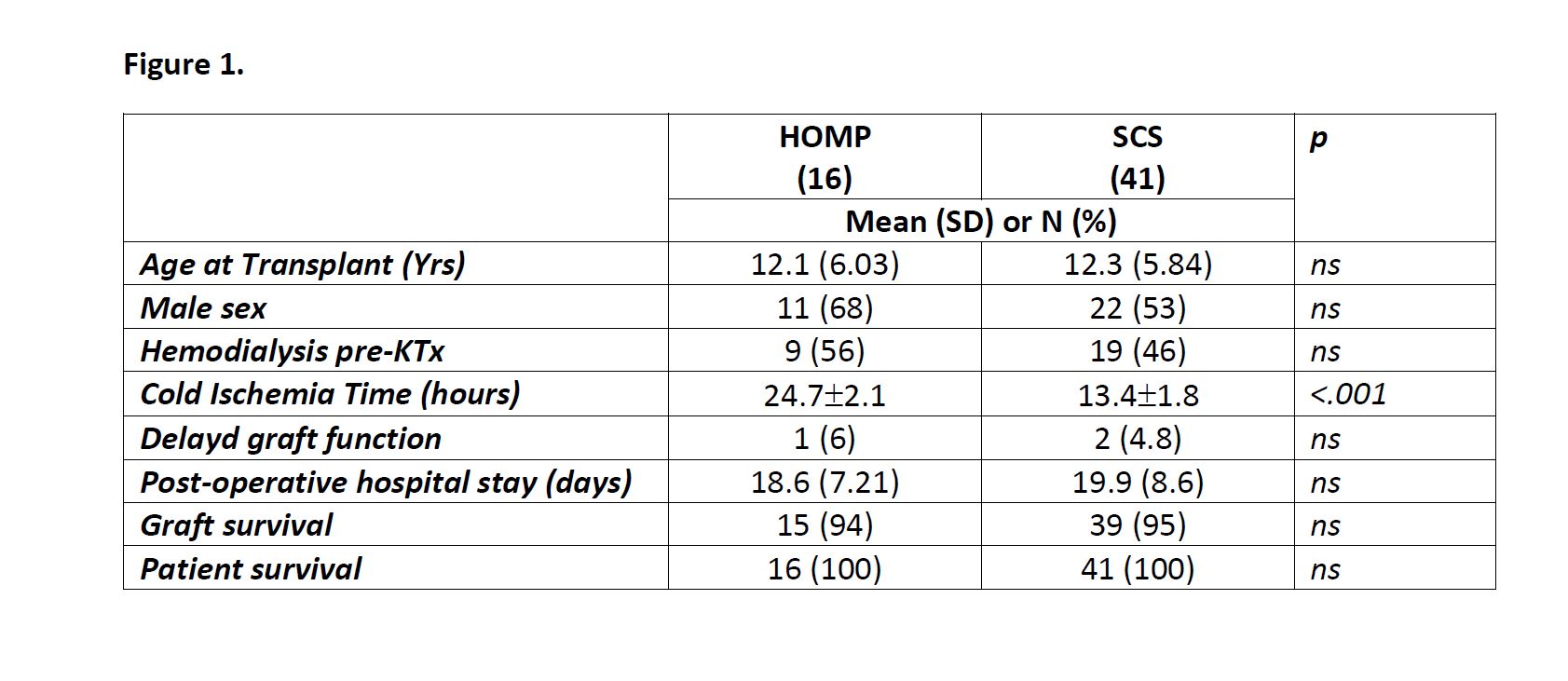
Hypothermic Oxygenated Machine Perfusion in pediatric kidney transplantation: a preliminary single center experience
Gionata Spagnoletti1, Zoe Larghi Laureiro1, Alberto Maria Fratti1, Isabella Guzzo2, Luca Dello Strologo2, Marco Spada1.
1Division of Abdominal Transplantation and Hepato-Bilio-Pancreatic Surgery Unit, Ospedale Pediatrico Bambino Gesù, IRCCS , Rome, Italy; 2Division of Nephrology and Renal Transplant, Department of Pediatric Specialties, Ospedale Pediatrico Bambino Gesù, IRCCS , Rome, Italy
Introduction: Hypothermic machine perfusion has become the new gold standard in clinical donor kidney preservation, decreasing risk of delayed graft function (DGF), improving graft survival, thanks to the influence of many different pathways involved in ischemia-reperfusion injury (IRI).
To date, low data are available about HMP for kidney transplantation (KTx) in pediatric population.
Methods: We report a retrospective analysis of our clinical experience using Hypothermic Oxygenated Machine Perfusion (HOMP) in pediatric KTx recipients. Between November 2019 and September 2022, we performed 83 KTx at our institution. We excluded 26 living donor transplantation and we included 57 KTx comparing 16 HOMP versus 41 static cold storage (SCS).
Results: Recipients were predominantly of male gender (57.8%) with a median age of 12.2 (1.9-21.4) years. We found similar demographics characteristics between the two groups. Despite a higher Cold Ischemia Time (HOMP 24.7±2.1 vs SCS 13.4±1.8 hours, p<0.001), we did not find differences in terms of DGF, graft survival, acute rejection rate, post-operative hospital stay (Figure 1).

Conclusion: With the limitation of a retrospective analysis, our data confirm the safety and the efficacy of the HOMP use in the pediatric setting: the longer CIT did not reflect on graft survival. Based on our preliminary experience, we can speculate and consider HOMP a useful and safe tool in the management of kidney transplantation also in the pediatric field.